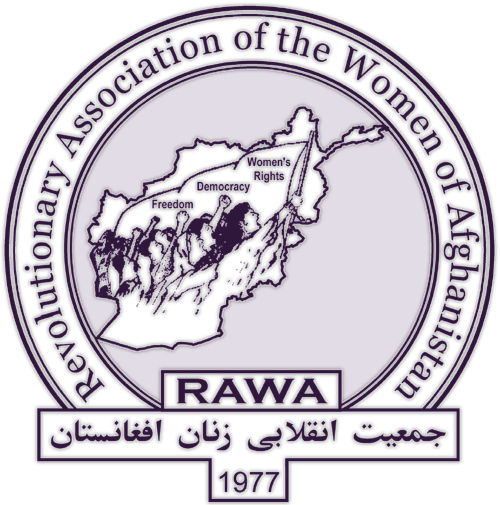Burma
UN sees 'crimes against humanity' in Burma
Human rights abuses against the Rohingya and other minorities in Burma may amount to crimes against humanity, according to a report released June 20 by the UN Office of the High Commissioner for Human Rights (OHCHR). The report documents abuses against minorities that include "arbitrary deprivation of nationality, severe restriction on freedom of movement, threats to life and security, denial of rights to health and education, forced labour, sexual violence, and limitations to...political rights, among other violations." The report states that the Rohingya and Kaman Muslims continue to live in camps for internally displaced people after approximately four years since violence began in the Rakhine state. Muslims in Rakhine state are severely restricted from accessing basic healthcare, emergency medical treatment and education. UN High Commissioner for Human Rights Zeid Ra'ad Al Hussein urged the government of Myanmar to take "concrete steps to put an end to the systemic discrimination and ongoing human rights violations against minorities."
Burmese opium farmers protest eradication
The White House has announced a partial lifting of sanctions on Burma in recognition of progress in its democratic transition. Restrictions are to be dropped on state-owned banks and businesses, although some 100 companies and individuals linked to the armed forces will remain iced. This relaxation comes at the request of longtime democracy advocate Aung San Suu Kyi, who although barred from holding the presidency is effectively the country’s leader following November's elections. But human rights concerns remain—especially around the fate of the Rohingya Muslims, persecuted and made stateless by the military junta that has now (mostly) surrendered power. And the multiple ethnic insurgencies in Burma's opium-producing northern mountains, while receiving less world media attention lately, continue to vex the country.
Anti-drug vigilantes heat up Burma's opium zone
With the harvest season just weeks away, tensions are high in Burma's opium-producing Kachin state following a series of clashes between opium-growing peasants and a local citizen anti-drug movement. Pat Jasan, a patrol established two years ago by the Kachin Baptist Church, has been in repeated confrontations over the past weeks at Kachin's Waingmaw township. The most recent, on Feb. 25, resulted in at least 20 Pat Jasan followers wounded in gunfire and grenade blasts. The vigilantes were apparently set upon by a heavily-armed force while clearing poppy fields.
Burma: will ceasefire wind down opium war?
Burma's President Thein Sein signed a ceasefire Oct. 15 with eight armed rebel groups, in a bid to bring the country's multiple ethnic insurgencies to an end before the next month's general elections—the first since a nominally civilian government took over and pledged a democratic transition in 2011 after decades of dictatorship. The agreement seeks to incorporate rebel groups into the political process, ending a war that has persisted (with varying levels of intensity) since Burmese independence in 1948. But while the pact is optimistically dubbed the Nationwide Ceasefire Agreement (NCA), seven armed groups involved in the peace talks did not sign the final deal. Among the seven non-signatories is the largest rebel army, the United Wa State Army (UWSA), with an estimated 25,000 fighters. Trying to put a good face on things, Thein Sein said, "history will judge the value of the NCA not by the number of signatories but how the terms of the NCA are effectively implemented." Also not signing on are the Kachin Independence Army (KIA) and the Kokang armed factions along the Chinese border. One of the most significant groups signing on, the Karen National Union (KNU), actually entered a bilateral ceasefire with the government in 2012.
India: Naga rebels divided over peace deal
India's National Investigation Agency (NIA) on Sept. 3 announced a Rs 7 lakh (approx. $10,500) bounty on Naga insurgent leader SS Khaplang in connection with an attack on an army convoy in Manipur three months ago that killed 18 soldiers. The 75-year-old rebel heads the National Socialist Council of Nagaland-Khaplang (NSCN-K), that has long waged an armed struggle for an independent Naga homeland uniting parts of Manipur, Arunachal Pradesh and Assam states along with areas of Burma. In early August, India's central government signed a peace agreement with the rival NSCN-IM (Isak-Muivah, named for leaders Isak Chisi Swu and Thuingaleng Muivah). But the Khaplang faction is not yet recognizing the accord, and the bounty appears to signal Delhi's impatience—or a strategy to keep the Naga struggle divided.
Burma: Dalai Lama challenges Suu Kyi on Rohingya
The Dalai Lama has appealed to Burma's Nobel peace laureate Aung San Suu Kyi to speak up for the country's persecuted Muslim Rohingya minority amid a worsening refugee crisis according to a May 28 report in The Australian. The Tibetan Buddhist spiritual leader said he is alarmed and saddened by the predicament of thousands still believed to be stranded at sea after weeks of being turned away by nations in the region. "It's not sufficient to say: 'How to help these people?'," he said from his office in the Indian Himalayan hill station of McLeod Ganj, where he has lived in exile since his escape from Chinese-occupied Tibet in 1959. "This is not sufficient. There's something wrong with humanity's way of thinking. Ultimately we are lacking concern for others' lives, others' wellbeing." He said there could be no justification for violence against the estimated 1.3 million Rohingya in Burma, who have been denied citizenship and subject to persecution by the state and Buddhist extremists. He appealed to his Burmese co-religionists to "remember the face of the Buddha" when dealing with the minority, sometimes referred to as the world's "least-wanted" population.
Burma passes restrictive population control bill
Burma's President Thein Sein on May 23 signed into law a bill requiring some mothers to space the births of their children three years apart. The Population Control Health Care bill, passed by parliament last month, allows authorities the power to implement "birth-spacing" in areas with high rates of population growth. Though the bill has no punitive measures, US deputy secretary of state Anthony Blinken and rights activists worry it will be used to repress women's rights as well as religious and ethnic minority rights. Speaking on the matter, Blinken stated: "We shared the concerns that these bills can exacerbate ethnic and religious divisions and undermine the country's efforts to promote tolerance and diversity." The government claims the bill and three others like it were aimed at bringing down maternal and infant mortality rates and protecting women and minorities, but activists argue that there are better ways to accomplish this goal.
Burma opium war spills into China
After weeks of escalating tensions along the remote mountain border, a Burmese MiG-29 fighter jet carried out an air-strike on Chinese territory March 13, killing four people working in a sugar-cane field in Yunnan province. Chinese authorities stepped up security along the border and registered a diplomatic protest. Burma, after initially denying everything, issued a statement expressing "deep sorrow" over the deaths. But Beijing says there have been at least three similar incidents of bombs from Burmese government forces falling in Chinese territory in recent weeks, and warned of "decisive" measures if there were any more. This all concerns the fast-escalating war in Burma's northern Shan state, where the rebel army of the Kokang ethnicity has again taken up arms against the government. More than 50,000 people—mostly Kokang—have fled the fighting into Chinese territory since the war was re-ignited earlier this year, and Burma accuses local military commanders in China of allowing the rebels to establish a staging ground in the border zone. (BBC News, March 16; Al Jazeera, March 15; Reuters, IBT, March 14)















Recent Updates
3 hours 7 min ago
18 hours 16 min ago
18 hours 41 min ago
1 day 2 hours ago
1 day 3 hours ago
1 day 19 hours ago
2 days 3 hours ago
3 days 20 hours ago
3 days 20 hours ago
4 days 1 hour ago